INTRODUCTION
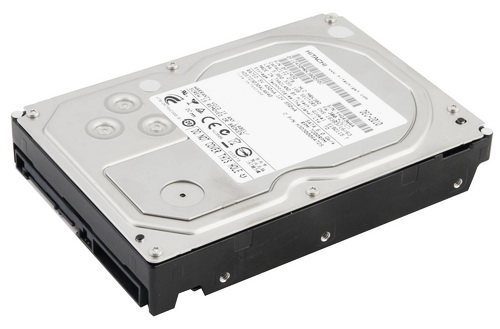
We all know (or at least most of us) that hard disk drives are much slower than solid state drives and so using the second just to house the primary OS (operating system) is always the ideal scenario. However no one can deny the splendid price/capacity ratio of HDDs especially now that we even have massive 4TB units available. Personally i don't feel I’ll ever be happy at least not until we finally see drives with capacities well exceeding the 10TB mark but in the meantime they highest available capacities will just have to do. A couple of months ago we checked the latest consumer oriented Deskstar 7K4000 4TB SATA III hard disk drive by Hitachi GST and as promised back then today on our test bench we have the latest enterprise class Ultrastar 7K4000 4TB SATA II hard disk drive.
HGST, a Western Digital company, is a market leader in enterprise hard disk drives and develops advanced hard disk drives, enterprise-class solid state drives, and external storage solutions and services that are used by large and sophisticated technology companies to store, preserve and manage data. HGST storage solutions have a reputation for quality, reliability and innovation. Our drives are trusted by the world’s high-transactional enterprises, Internet services companies, creative professionals, and consumer electronics and automotive system manufacturers to store the avalanche of new content resulting from cloud computing and services, virtualization, social networks, HD video and mobile platforms. HGST focuses on delivering innovative, customized storage solutions that are an integral part of a customer’s broader systems, infrastructure and application platforms ensuring a storage value proposition that addresses each customer use case and pain point. This consultative approach to storage coupled with technical expertise, a comprehensive customer support infrastructure, world-class operations and a broad portfolio of solutions sets a high standard for product and service excellence. Founded by the pioneers of hard drives in 2003, HGST became a separate and wholly owned subsidiary of Western Digital Corporation in March, 2012. HGST maintains its U.S. headquarters in San Jose, California and is marketed under the HGST brand name.
Many of you are certain to think that i made a typo error when writing the title of this review but that's not the case not and so today we will be taking a look at the SATA II variant of the Ultrastar 7K4000 4TB line. Now i can't really say why (perhaps SATA III is not 100% backwards compatible) but Hitachi GST offers the same exact drive in both SATA II and III flavors so we thought this would be the excellent opportunity to test both variants to accurately measure any differences in performance (testing the same exact drive in SATA II and SATA III versions with the same system is as good as it gets) although in the following benchmarks you will see that there's virtually no (or very little) performance difference between the Ultrastar 7K4000 4TB SATA II and our previously reviewed SATA III drives. So time to get up close and personal with the Ultrastar 7K4000 4TB SATA II HDD and see what kind of performance you can expect from it (aside its massive 4TB capacity).
SPECIFICATIONS AND FEATURES


PACKAGING AND CONTENTS
Nothing new in the packaging department since the two Ultrastar 7K4000 4TB drives we received arrived inside anti-static/moisture bags.
And as usual just the drives in the bags (one day i really hope i see SATA cables included from all manufacturers even in OEM packaging).
THE ULTRASTAR 7K4000 4TB
Hitachi has been using the same rugged look for their Deskstar/Ultrastar line of HDDs like forever and i have to say that i really like it.
As always the sticker placed at the top of the drive informs you of the available capacity, drive sectors, serial number, country of manufacture, electrical requirements, current firmware version, SATA connectivity (3Gb/s = SATA II) and RPMs (Rotations Per Minute).
The drive comes with the 3 standard mounting holes on each side.
The various components have been moved on the interior of the PCB for better protection.
At the end of the drive we see the usual SATA connector (again nothing new here, only SAS connectors are different).
TEST BED
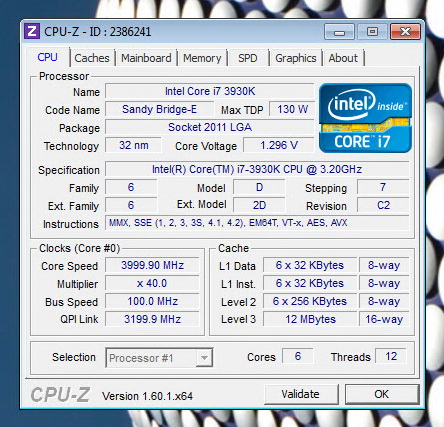

TESTING METHODOLOGY
Thoroughly testing hard disk drives may require time and patience but that's just about it. Of course that doesn't mean that one must take it lightly, at least not when people base their decision on your results. True many choose to only use 2 or 3 benchmarking suits in order to measure the performance of a drive or drives since quite honestly most benchmarking suites do tend to agree with each other. However i always like to take things a step further not because i have to but because i want to be almost 100% certain of the results i post (one can never be 100% certain about anything).
So in this kind of reviews we will use a total of 6 different benchmarking suites in an effort to bring you the most accurate results across the board. Now the only reason why i say effort is because real-world usage is almost never on par with what results one gets by running several benchmarks on a drive and that's mainly because there are many variables at work from ambient temperatures to hardware configurations. The benchmarking applications we use are the AIDA64 suite (former Everest Pro), HD Tune Professional, HD Tach RW, ATTO, Sisoftware Sandra Pro and the Crystal Disk Mark 64bit. These benchmarking tools are the best in what they do and as you will also see later on their results more or less agree. Each test is performed a total of 6 times and then the average is recorded into the charts. Temperatures are recorded using Hard Disk Sentinel and after 45 minutes of continuous testing in a 23 degrees Celsius temperature controlled room. Finally we also use an ExTech HD600 dBA meter on each of the drives (5cm away) in order to accurately record their noise levels, although if you don't turn off all system fans when doing so it's quite possible that you will never even hear the drive. The operating system as usual is a fresh installation of Microsoft Windows 7 Ultimate Service Pack 1 with every update installed up until the 23rd of June.
Since there are many people out there who have asked if it's possible to include RAID0 tests with our hard disk drive reviews we decided to do so and so this will always be the case (providing of course we get more than a single drive) with all the available drives we have in our disposal. All RAID0 tests are performed on the latest LSI MegaRAID 9265-8i SAS/SATA 6Gb/s card and with different configurations in both ATTO and Crystal Disk Mark since with normal single drive settings the results were far from accurate.
TEST RESULTS - AIDA64 / ATTO
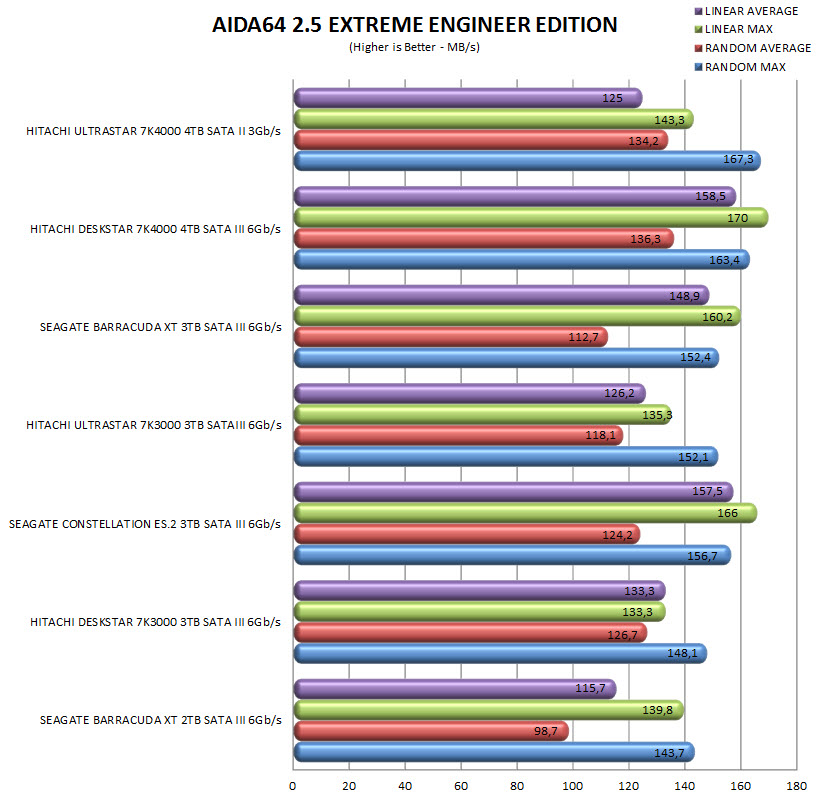
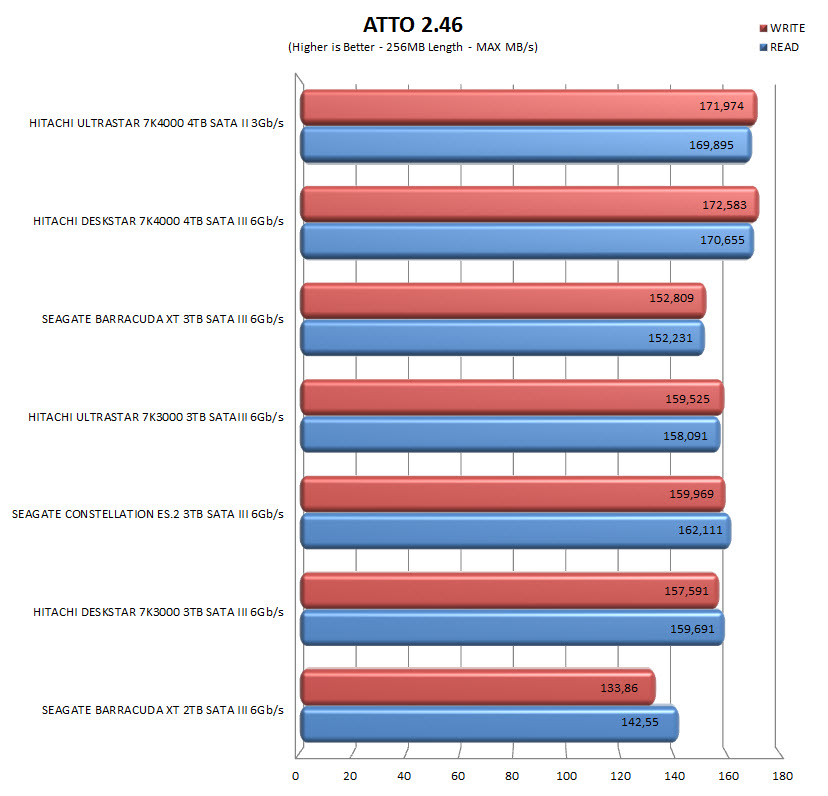
TEST RESULTS - HD TACH RW / HD TUNE PRO
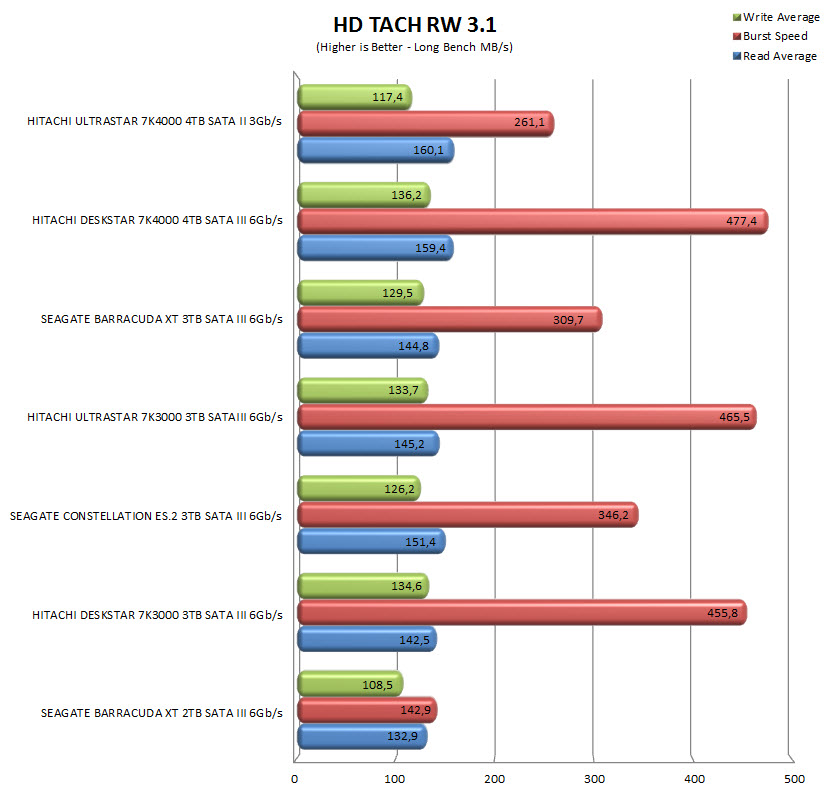
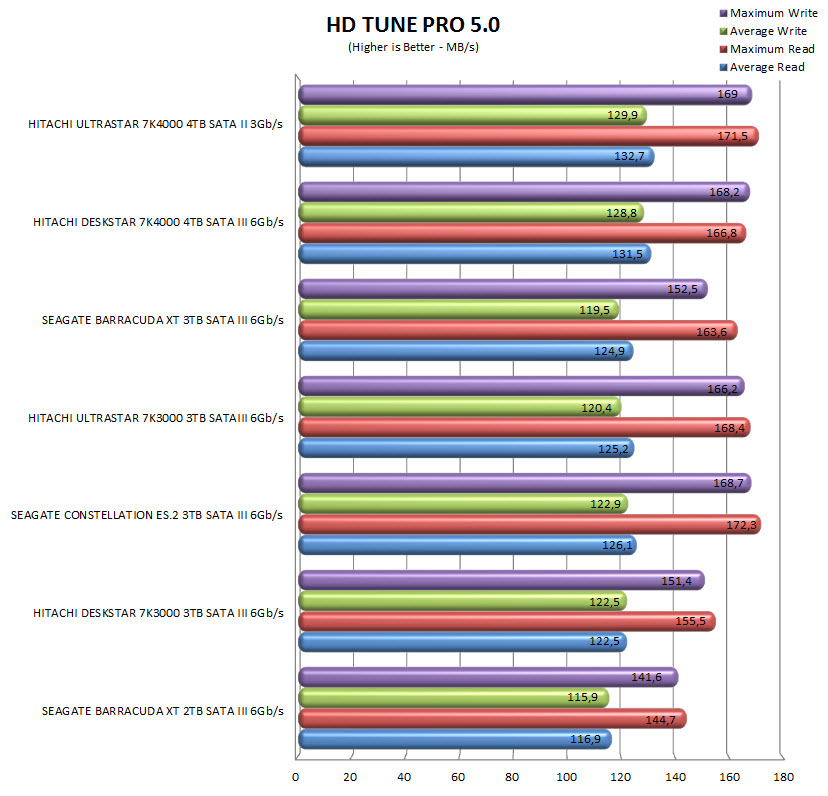
TEST RESULTS - SISOFTWARE SANDRA PRO / CRYSTAL DISK MARK
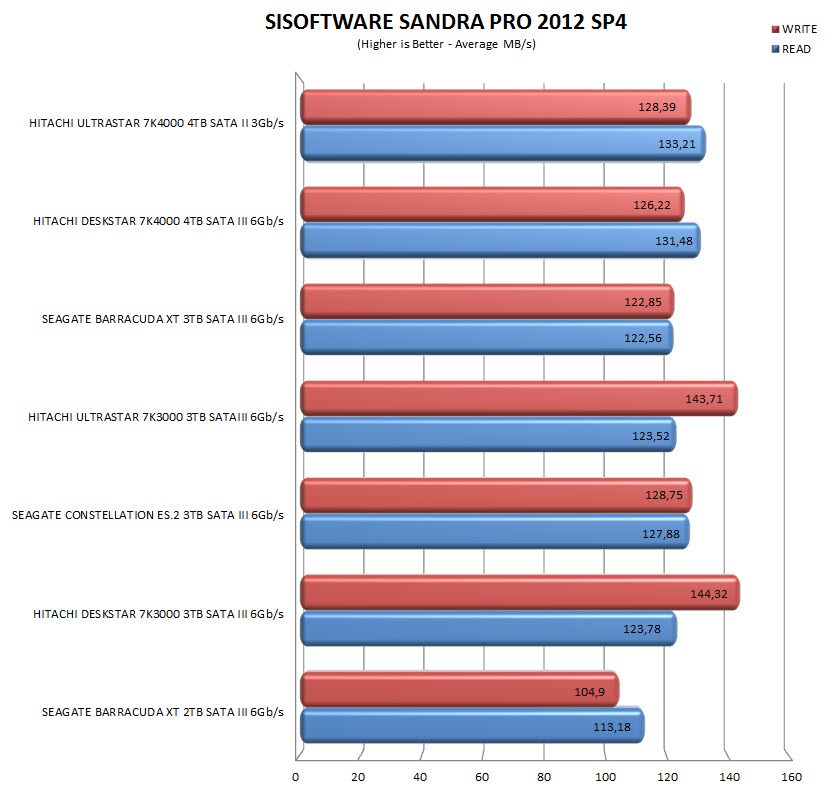

TEST RESULTS - RAID0 PART 1
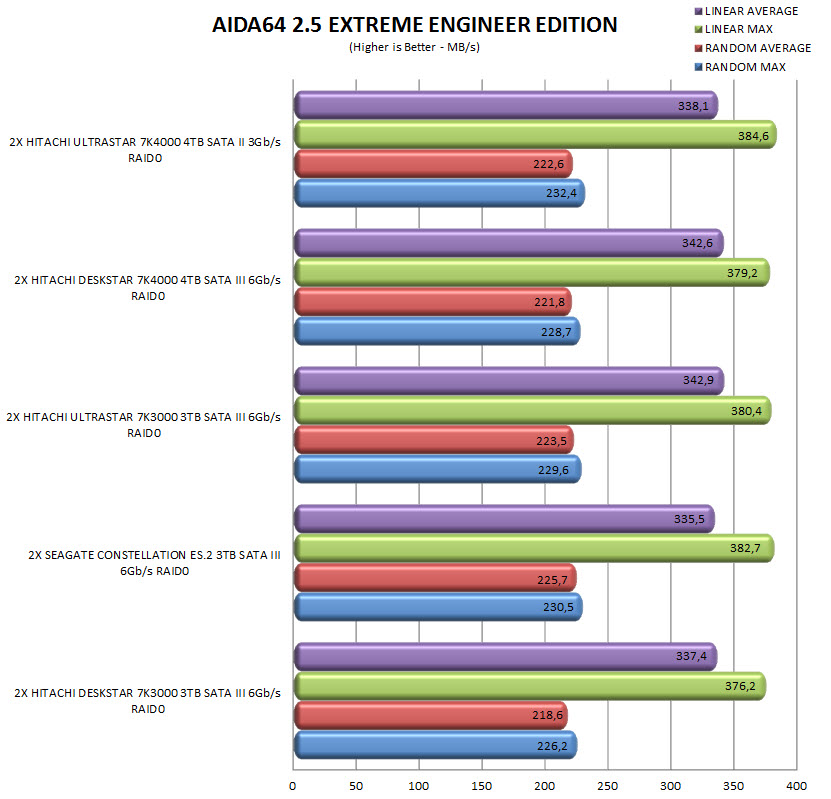
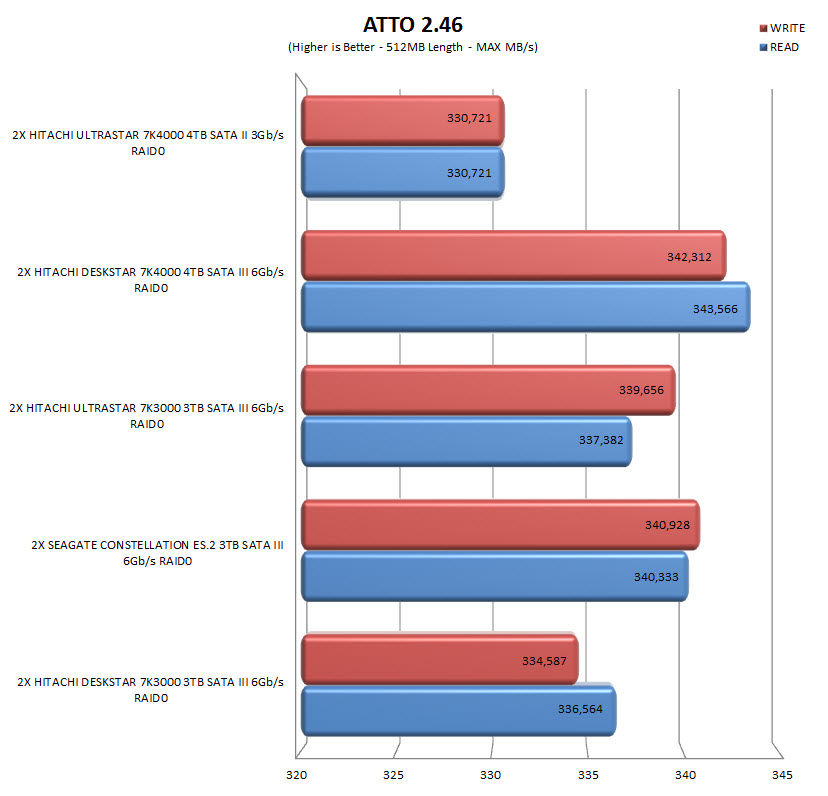
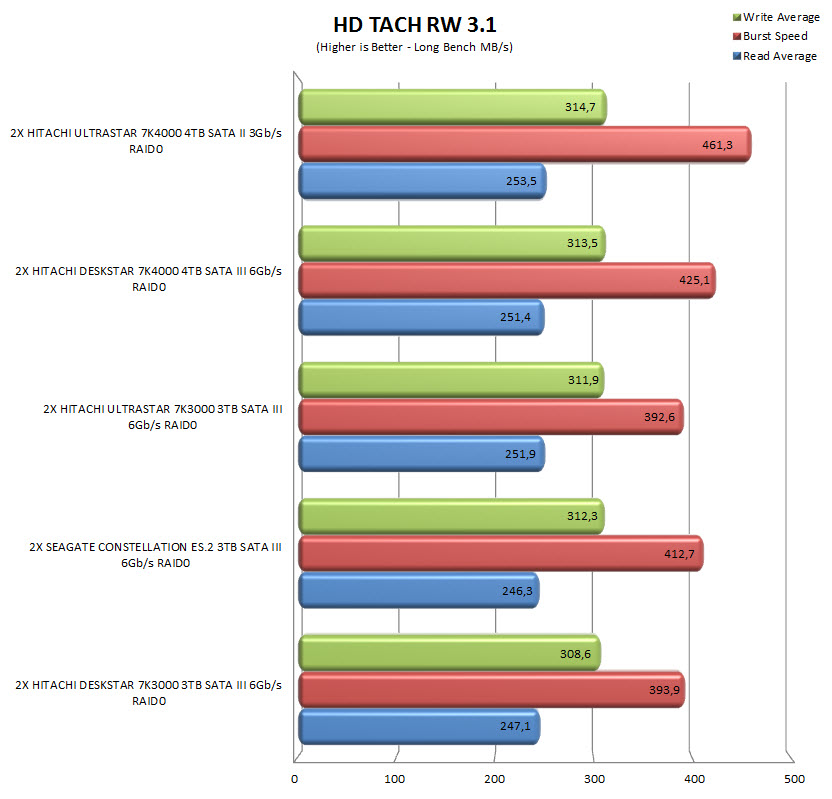
TEST RESULTS - RAID0 PART 2
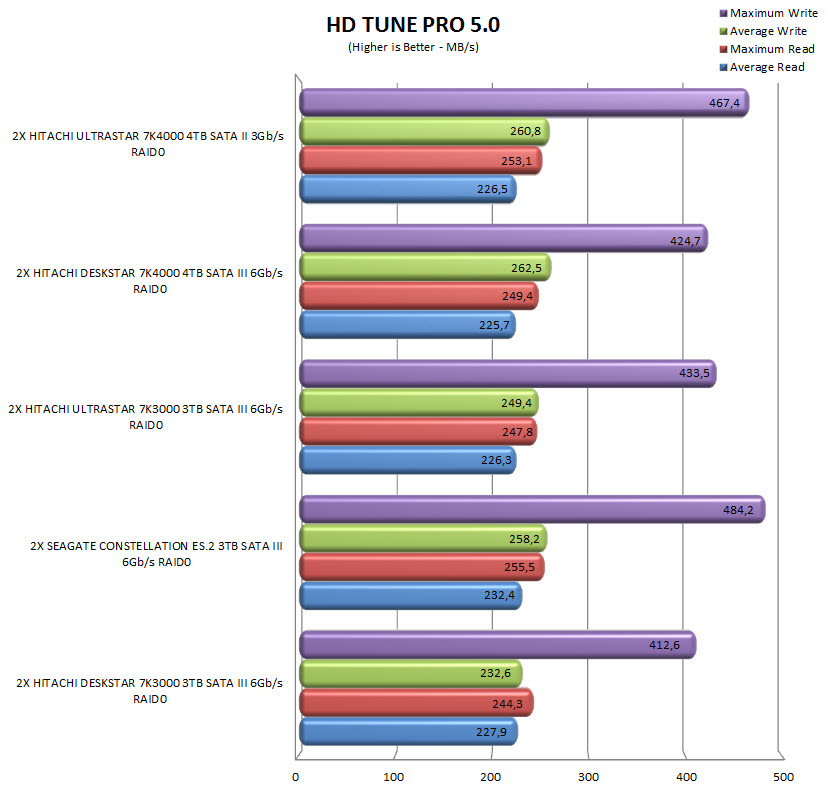
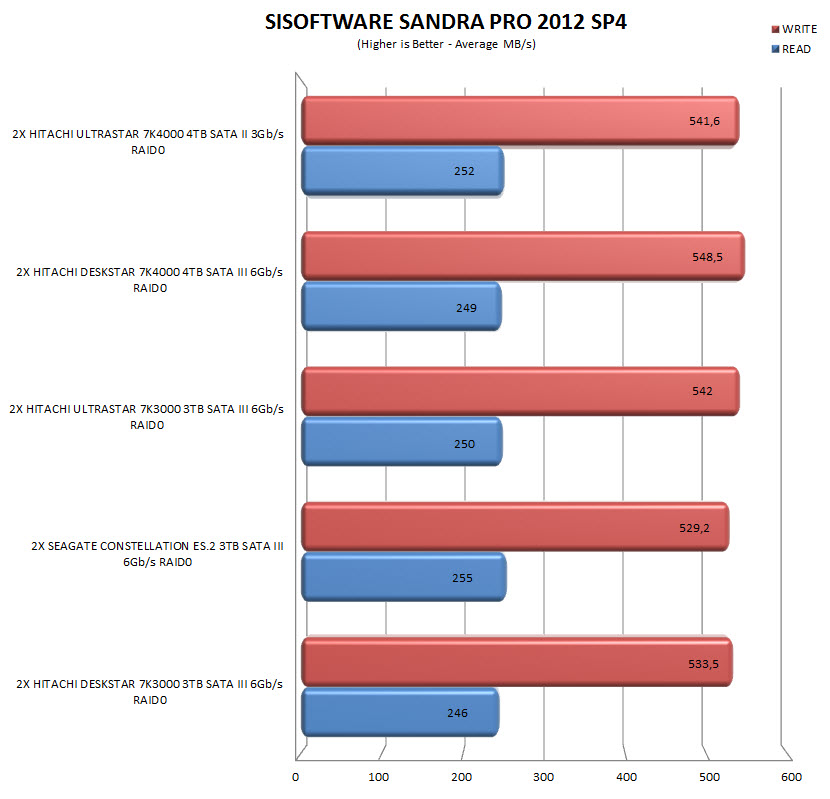
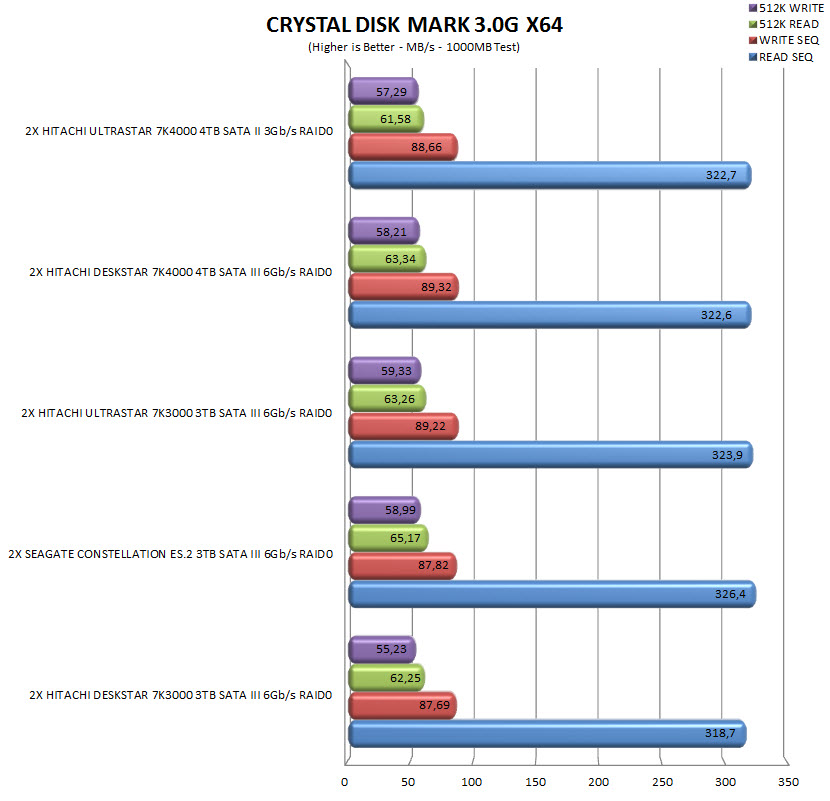
TEST RESULTS - TEMPERATURES / NOISE LEVELS


CONCLUSION
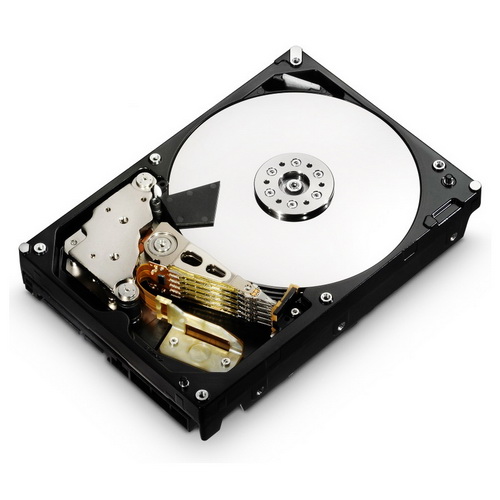
Based on our results it's quite clear that SATA II and SATA III are not at all apart in terms of performance (at least not with hard disk drives) which actually makes sense since the maximum speed of SATA II can reach 300MB/s (3Gb/s). Still we can only offer the exact performance differences after testing the Ultrastar 7K4000 4TB SATA III variant which should be quite soon. Certainly compared to one of the 1st SATA III HDDs to hit the market such as the Barracuda XT 2TB the Ultrastar 7K4000 4TB SATA II is quite faster due to the more up to date high quality components used. Overall the Ultrastar 7K4000 4TB SATA II may not be the fastest all around HDD we have ever tested (perhaps the SATA III variant will up the score a bit thus making it the fastest one to date) but it comes real close and for a 4TB drive that's quite impressive.
Massive capacity hard disk drives don't come cheap especially at the beginning of their availability and that goes double when we are talking about an enterprise class product such as the Ultrastar 7K4000 4TB models which currently retail for around USD520 inside the USA and 470Euros inside the EU. True the price may look somewhat high (and it is for most people) but if you break it down you are only paying around 14 cents per gigabyte which is actually quite remarkable especially if you take into consideration that you need to pay over 10 times as much per gigabyte for an SSD. Bottom line the Ultrastar 7K4000 4TB SATA II drive (and its SATA III variant) is targeted towards people who not only need the massive 4TB capacity but also require the durability and speeds offered by an enterprise class product and because of that we are awarding it with our Platinum Award.

PROS
- Enterprise Class Quality
- 2.0 Million Hours MTBF (Mean Time Between Failures)
- Performance
- 4TB's Capacity
- Temperatures/Noise Levels
- 5 Years Warranty
CONS
- Price Tag (For Some)

 O-Sense
O-Sense





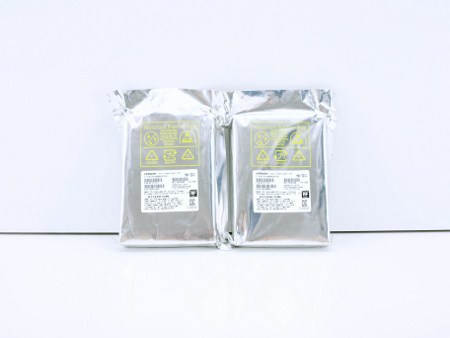

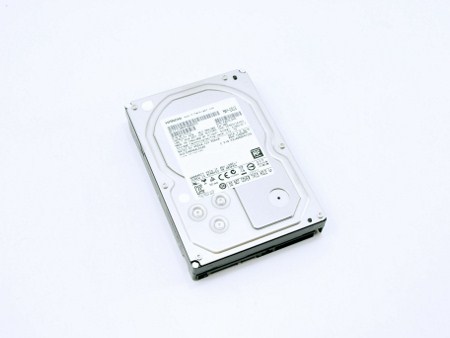
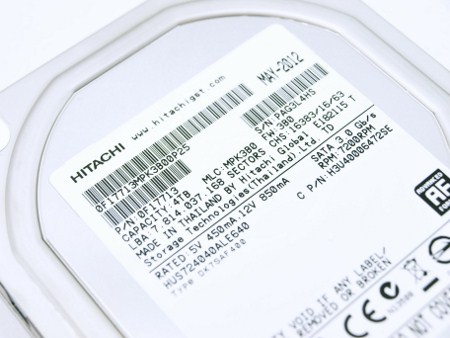

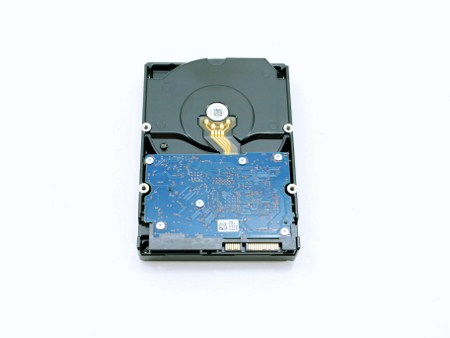
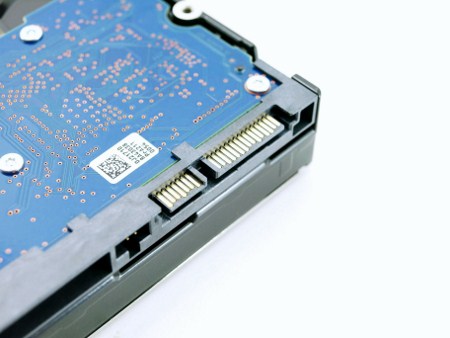


.png)

